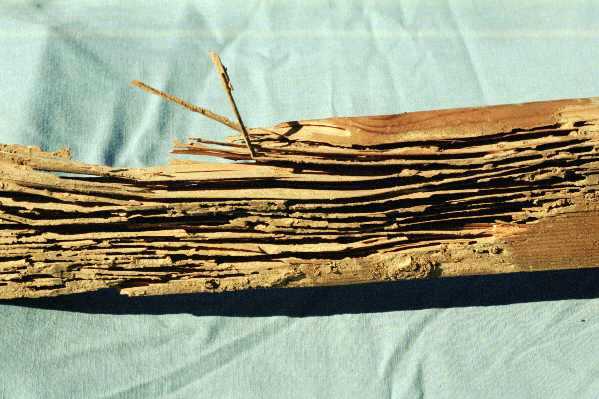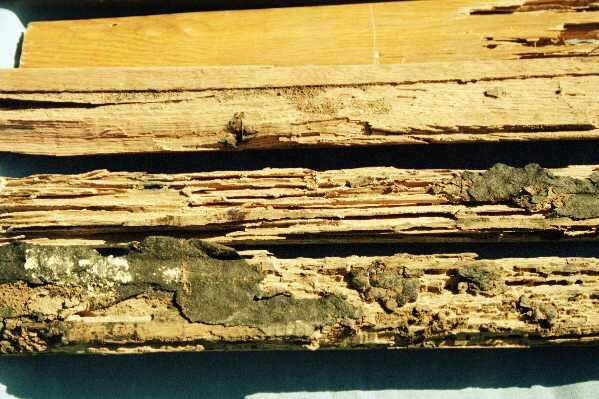

Click on images to see a larger image and description!
  Click on images to see a larger image and description! |
Every year, termites cause more damage than fire, floods, tornadoes, and earthquakes combined. Therefore, every homeowner should be at least somewhat knowledgeable of termites, the damage they can do, the signs of an infestation, conducive conditions, and what is involved in the treatment of termites. |
The Biology of Termites |
FOOD AND SHELTER |
| Termites feed on cellulose material. In nature, this is dead trees, branches, leaves, etc. Therefore, in nature, they perform a valuable service; they help break down the dead wood. However, we also build our homes and businesses out of dead wood. Therefore, they enter these structures and proceed to feed on the beams, studs, and other cellulose products in the home, including wallpaper and books. |
| Termites are also soft-shelled insects. They require a high level of moisture and a lack of sunlight or they will dry up and die. Therefore, wood that is in direct contact with the ground is best. However, termites do not necessarily need direct wood to ground contact. They are capable of building mud tunnels or shelter tubes from the ground to the wood. These look like small strips of dirt running up the foundation to the structure. When broken open, there is a small hole running through the center of the mud trail. You may even see the termites inside the tunnel. |
DETECTION |
| The swarmers and the mud tunnels are usually the first signs of a subterranean termite infestation. Other signs may be damage to the wood members and piles or wings. Sometimes, a termite infestation may in a home for years before they are discovered, thus causing massive damage. I remember the first year in the pest control business, I went to a house where the homeowner was having his house painted. When the painters were stripping the old paint and came to the kick plate under the front door, the siding just exploded into pieces. When I got there, and we looking in the basement, there was no outward sign of a termites present. But when I used my probing tool on the sill plate and floor joists, there was extensive damage to the sill plate and about 6 or 7 floor joists in a row. By the way, the homeowner lived in the house for over 30 years and there was a pool table, which was used regularly, just under the exposed damaged joists. This illustrates that termites are known hidden invaders for a reason. And for this reason, a qualified termite inspection is usually performed prior to someone buying a home and should be done every 2-5 years. |
TREATMENT |
| Once a termite infestation has been detected, or for preventative purposes, a treatment needs should be considered. Go to Pestdude's Termite Treatment Page for more information. |
If you have any questions, please ask Pestdude!
Also see the following links:
PESTICIDES
CHOOSING A PEST MANAGEMENT PROFESSIONAL